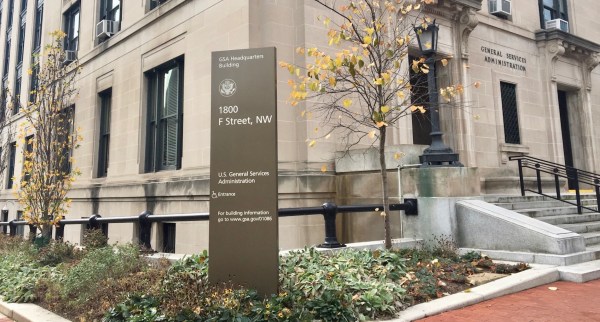Agencies are bad IT customers, but getting better — officials

The federal government isn’t the easiest customer to do business with, particularly when it tries buying new technologies.
Several federal IT and acquisition officials made that message clear Tuesday at ACT-IAC’s annual Acquisition Excellence conference, warning that agencies must evolve and adapt to bridge the gap between government and industry innovators to continue providing essential digital services and keeping the nation out of harm’s way.
“Some small, innovative companies in particular don’t trust the federal government yet,” U.S. Chief Acquisition Officer Anne Rung said during her luncheon keynote. “They see far more downside than upside in doing business with us.”
Because of a “very cumbersome bureaucracy” and “a number of things that have built up over time that can be daunting,” the federal government is “not the easiest customer,” said Claire Grady, director of the Defense Department’s procurement and acquisition policy, worrying that it might prevent the military from acquiring emerging technologies to keep it dominant in the modern age.
The pace of technology development in recent years has left federal agencies like the DOD with no other option but to evolve, Grady said. That’s a big reason why Defense Secretary Ash Carter has taken multiple trips to Silicon Valley in the past two years. Prior to that, a DOD secretary hadn’t made the trip to America’s innovative hub in decades.
[Read more: Defense secretary announces $171M Silicon Valley initiative]
“That’s a pretty big source of technology — a pretty big source of innovation,” Grady said. “And to not be plugged in to that kind of innovation was perhaps a mistake; that’s something we want to make sure we are open to.”
Still, “when you look at everything we require, everything we do, it can be challenging for companies” like those in Silicon Valley to work in those requirements, Grady said.
The solution: “streamlined, commercial-like acquisition policies are absolutely essential,” Rung said.
Though the constraints in the Federal Acquisition Regulation are often blamed for the lack of federal innovation, Rung said the FAR contains legal authorities to innovate that are “seldom used.”
Rung’s Office of Federal Procurement Policy has instituted innovation labs within CFO Act agencies and funded the training of digital IT acquisition professionals to experiment within the FAR in those innovative safe zones.
[Read more: White House launches innovative acquisition labs]
Similarly, the White House’s U.S. Digital Service team delivered the TechFAR Handbook in 2014 to help federal acquisition officers find alternative but legal ways to look at federal acquisition.
Kay Ely, the former director of IT schedules with the General Services Administration and now deputy assistant commissioner of the Office of Integrated Technology Services, said GSA’s Federal Acquisition Service is working to “be an economic catalyst and to help the vendors and industry that are not as familiar with our technology processes to work through those.”
“When I have a vendor come to me and say ‘I would love to be a part of Schedule 70, but I have to pay $25,000 just to have somebody help me through all that,’ that doesn’t make me happy,” Ely admitted. Her team is also working to “streamline procedures” to get vendors and products on the schedules faster, in part by working with GSA’s digital services team 18F.
“Our customers said they need this innovation technology yesterday,” Ely said. “So we’re doing what we can to answer that call.”
All this work to improve IT acquisition is bearing a few positive results, according to some speakers at the event.
Andrew McMahon, commissioner of the Pacific Rim Region for GSA, said despite the deterrence of long development and procurement cycles in the federal space, small companies are becoming more interested in playing a part helping agencies.
“We are getting a lot of interest in our space that I haven’t seen before,” McMahon said, calling the last six months “a pivot.”
“A lot of the folks are finally asking” how to get involved in the federal marketplace, he said. “I think a lot of the things that are being piloted and tested by folks on this stage are beginning to encourage the community on the West Coast” to contribute.
Luke McCormack, CIO at the Department of Homeland Security, took DHS CTO Michael Hermus and Chief Acquisition Officer Soraya Correa to meet with technologists out west in recent months. He saw the same thing McMahon did, saying agencies needs to communicate better with vendors exactly how they can help.
“They’re trying to understand how to get access to this market,” McCormack said. “They are very deeply engrained and focused and excited by the products they have. And we also find that most of them are patriots and want to help this country. But they need to understand how to do that.”
Contact the reporter on this story via email at Billy.Mitchell@FedScoop.com or follow him on Twitter @BillyMitchell89. Subscribe to the Daily Scoop to get all the federal IT news you need in your inbox every morning at fdscp.com/sign-me-on.






